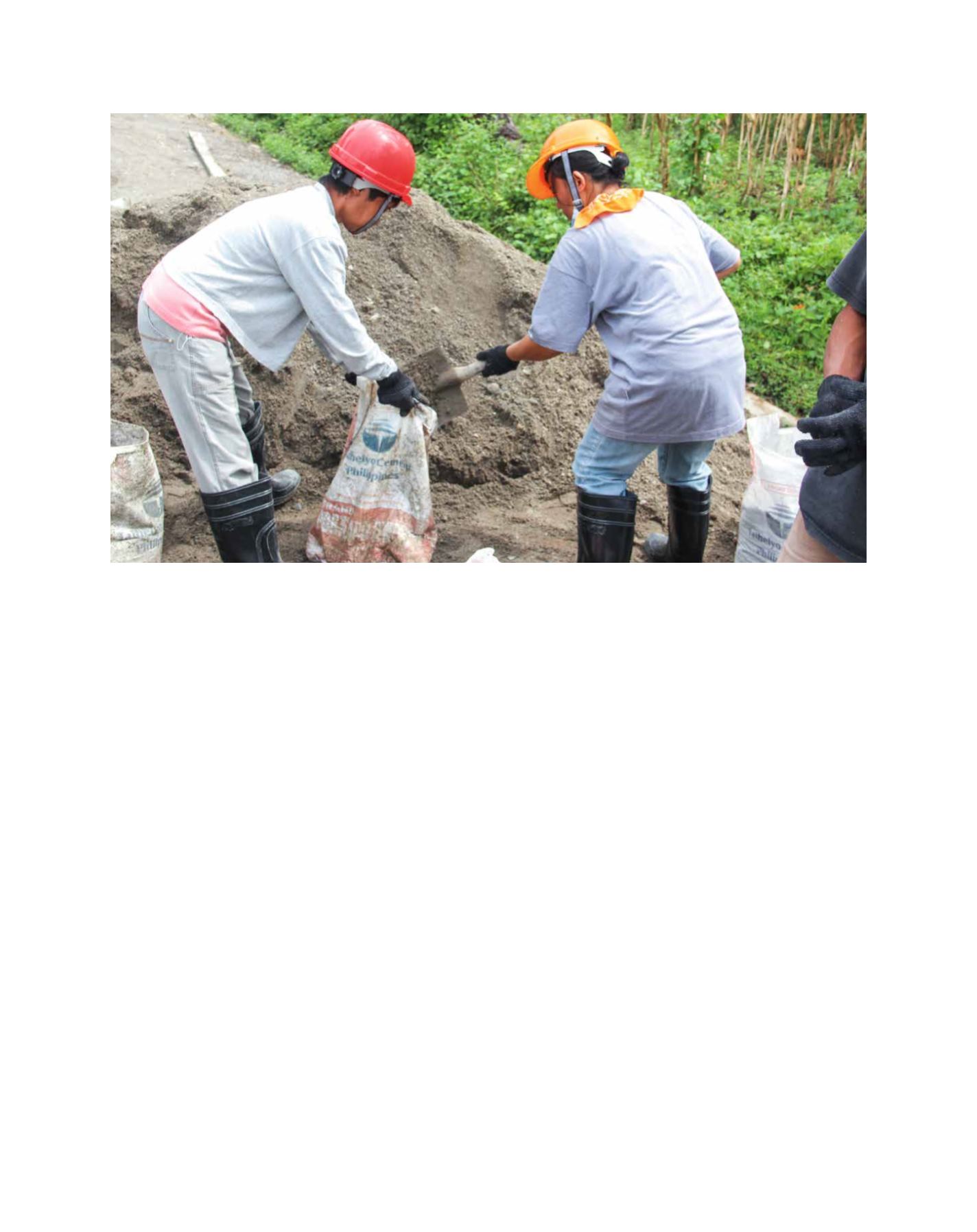

[
] 78
Image: Department of Social Welfare and Development
Women from Zamboanguita, Negros Oriental Province prove they can work in construction as they take part in building their subproject
community committees, and 20 per cent of the total paid labour-
ers are now women, a large increase from the baseline of 3 per
cent for skilled and 5 per cent for unskilled labour at the start of
the project. This large increase in paid labour was a result of stra-
tegically offering jobs to women beneficiaries of the conditional
cash transfer programme, and of encouraging discussion in pre-
construction meetings on how women can be more engaged in
paid jobs. Women also acquired new skills – such as welding,
plumbing, carpentry, masonry, electrical installation, tile setting
and hollow block making – through non-traditional training,
thus increasing their opportunity to be hired during subproject
construction, and even beyond.
KC-NCDDP continues to build the confidence of women,
enabling them to play an important role in decision-making
on matters affecting community development. Some even
become barangay officials; their constantly active participation
in KC-NCDDP activities has earned them the trust of other
community members. Many have learned to express commu-
nity priorities and implement subprojects that would provide
or restore basic social services to their communities. A study
reveals that some men, proud of their wives’ accomplishments,
even show support by taking over some household chores.
The following stories capture the life-changing experiences
of women as they participate in development subprojects, and
thus gradually chip away the prevalent gender inequality in
their communities.
In Sorsogon Province, about 600 kilometres southeast
of Manila, women played key roles in their communities:
helping build much-needed infrastructure, identifying prior-
ity subprojects during barangay assemblies, and providing
administrative support during implementation. Women also
helped in actual physical construction, a field traditionally
dominated by men in the Philippines.
One of these women is Lorna, a 41-year-old mother of four,
who shovelled gravel and sand, and carried hollow blocks to
build the now fully functional three-classroom school build-
ing in Barangay Tres Marias, Donsol. A single parent, she
toils with a wholehearted focus on providing basic and other
necessities for her children. Before engaging as a paid labourer
she has served as housemaid and caregiver, and continues to
do so. Now she earns extra income from cooking and selling
food at the town market. Asked if she would again engage in
similar paid labour, she said yes unequivocally, and quipped,
“Women can also do what men can do. I can even saw and
cut steel and metal!” More seriously, she added, “I don’t want
my children to experience the poverty I experienced, that’s
why I work hard.” All her children are studying – the eldest
in twelfth grade vocational high school and the youngest in
fourth grade. A model of perseverance and leadership for her
children and the community, Lorna also regularly attends
barangay assemblies, striving to participate and suggest solu-
tions on matters affecting their daily lives.
In Barangay Gimagaan, Donsol, Loida is one of 30 women
out of 83 paid labourers who built the flood mitigation struc-
ture that has kept their streets, houses and lives safe from
yearly devastating floods. The 31-year-old mother to a nine-
year-old girl applied for the job to augment the minimal
income from her small organic farm of vegetables and rice.
She is also a community volunteer leader and a member
of the subproject’s monitoring and implementation team.
A B
etter
W
orld
















